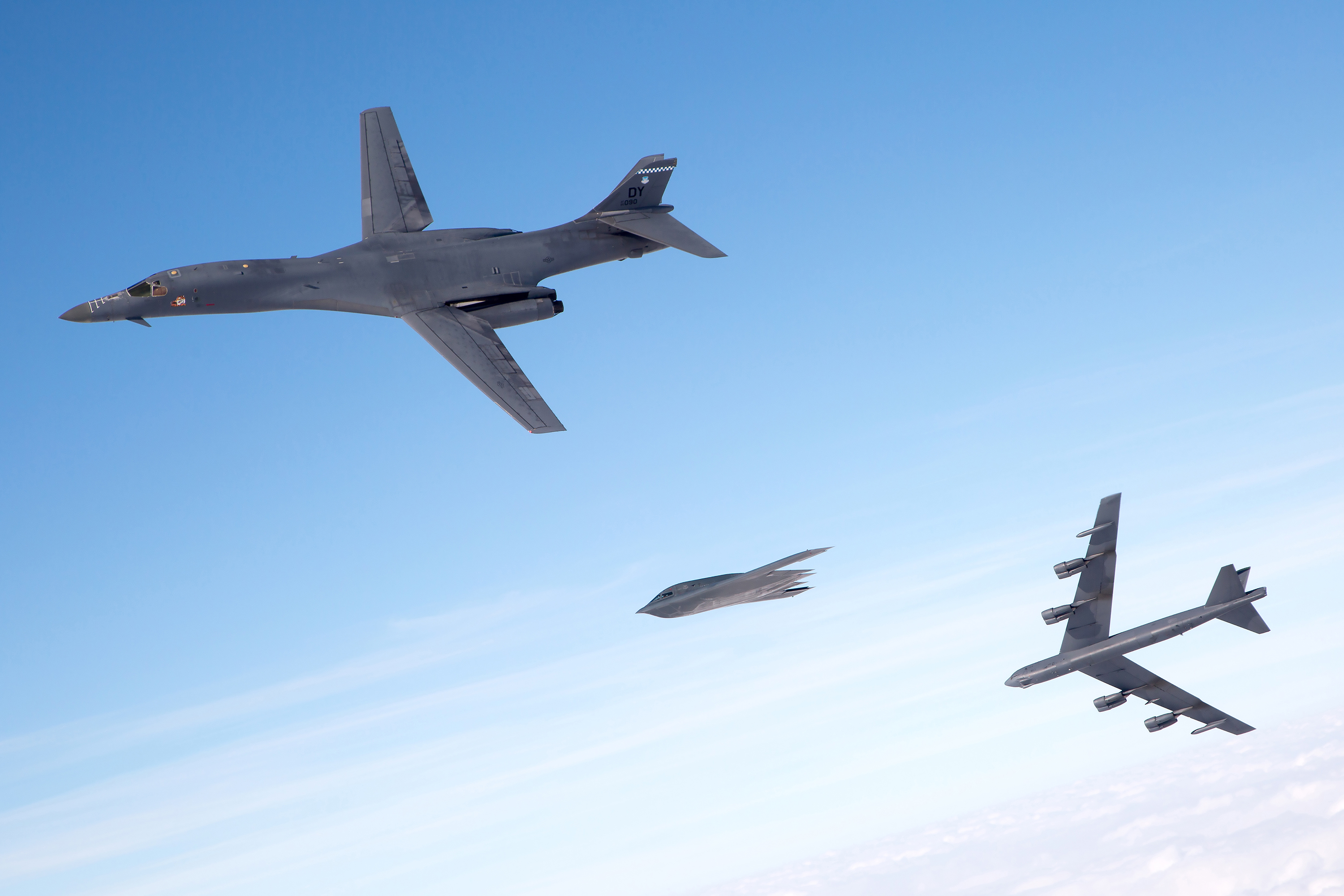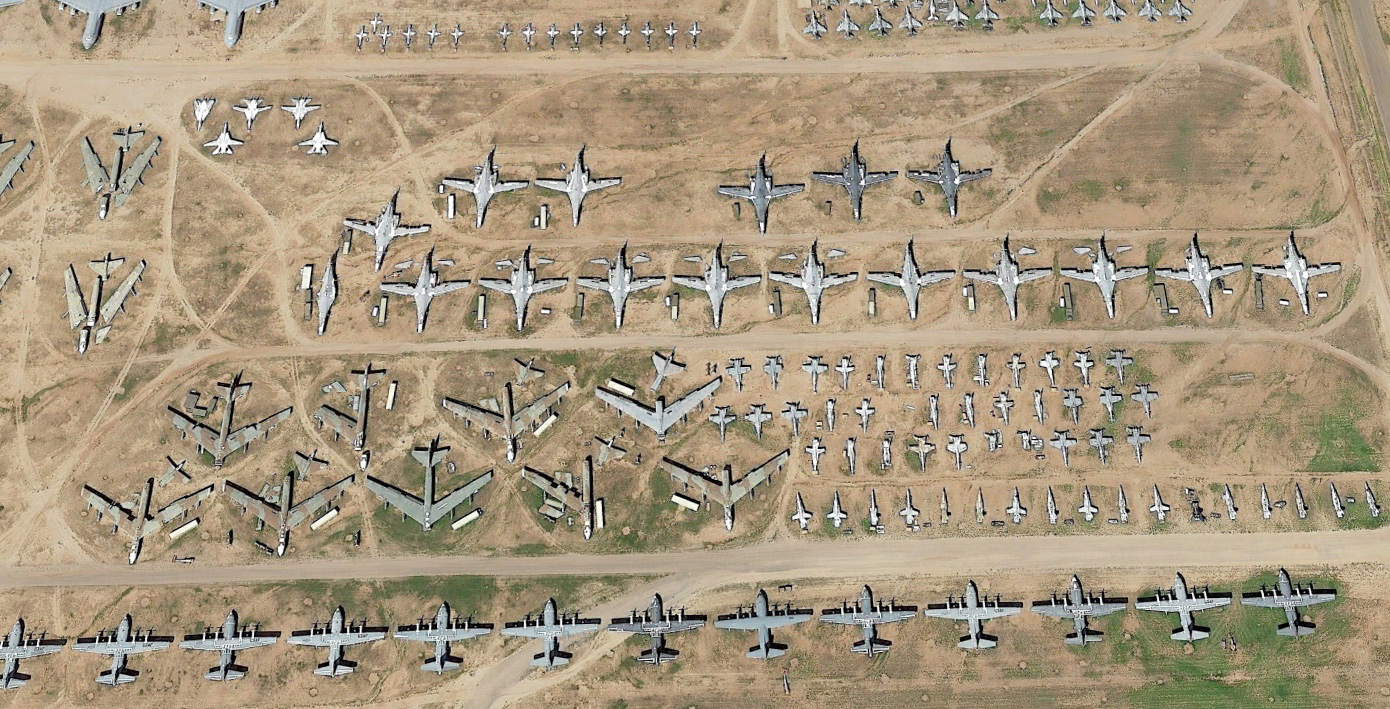There have been repeated warnings from the Pentagon brass that there will be some controversial sacrifices in its 2021 budget. We don’t have all the specifics on exactly what is on the chopping block and what isn’t, but one report from Foreign Policy states that the flying force’s plans include jettisoning 17 of its 60 B-1B Bone bombers. After this report was published on February 4th, 2020, I was bombarded with messages from those inside the B-1B program or associated with it, and those who weren’t, with concerns over the supposed cost-saving initiative. The reality is we have seen this type of thing many times before and the intentions of the service proposing such controversial cuts aren’t entirely clear at this time. Above all else, getting such a plan through congress will be a major challenge, and maybe that is the entire point of the exercise in the first place.
In her report, Foreign Policy’s Lara Seligman wrote the following:
On the chopping block are a significant chunk of the older F-15s and F-16s, 17 of roughly 60 nonnuclear B-1 bombers, along with 21 of the service’s unarmed RQ-4 Global Hawk drones. The proposed cuts over what is called the “five-year defense plan” will be included in the White House’s annual budget submission for fiscal year 2021, which is set to be released on Feb. 10.
We have not been able to corroborate this information, but assuming it is accurate, the B-1B fleet would shrink down to just 43 airframes in the not so distant future. The idea had been that the B-1B force would be retired on at least a one to one basis once the B-21 Raider enters service beginning in the latter half of the decade and it has supplanted the B-2A Spirit. Overall, the B-1B is slated to exit the service by 2036, although that timeline is very likely to shift to the right if the B-21’s development hits some roadblocks. All said, by the end of the 2030s, the entire USAF bomber force would be made up of B-21s and upgraded and re-engined B-52s under the USAF’s most recent bomber roadmap.

Based on the recent condition of the B-1B fleet—which has never been anywhere near an example of high readiness and efficiency—there is certainly an argument to made, at least in a vacuum, that it should be reduced or drawn down ahead of schedule, but the geopolitical, strategic, and political realities of our time make that a very hard sell. Congress would have to justify getting rid of long-range weapons trucks that are, at least on paper, ideally suited for the fighting a sustained conflict in the vast Pacific Theater. In fact, the discussion has been focused on how the U.S. doesn’t haveenough long-range bombers to meet its commitments, not that it needs to get rid of the service’s most tired and costly to operate examples.
I cannot overstress how sensitive a topic the bomber force is in Congress. It’s only superseded by a few others—namely the supercarriers. In a roughly $738B yearly baseline defense budget, the idea that what are considered critical, low-density, high-demand air combat assets that are already bought and paid for and are supposedly well suited, if not essential, to confronting China’s anti-access/area-denial strategy need to be cut on cost-savings grounds represents pretty sorry optics. In fact, it seems like such a hard sell that it’s downright peculiar and the Air Force is well aware of this.

Posturing to cut ‘sacred cow’ strategic capabilities seems to be a new tactic by the armed services to make the case that they need more money to keep those capabilities viable. We saw a similar set of circumstances with the Navy’s bizarre move to retire a middle-aged supercarrier because there wasn’t enough money—a highly subjective idea from the get-go—to put it through its scheduled complex overhaul. In the end, Congress said absolutely not and even President Trump himself, whose administration’s own budget included the early retirement of the carrier, baulked at the idea outright.
Just as we predicted, the USS Harry S. Truman is getting its overhaul.
There is also the questionable idea that cutting what is already a small and hard to support fleet down to even less airframes won’t result in diminishing returns over the long haul. In the short term, the 17 retired B-1Bs could be used as spare parts bins. As such, they would help bolster the remaining fleet, but the relevancy of an even smaller B-1B force would likely spiral quickly downward after a period of time, which will likely hasten the retirement of the rest of the bombers outright.

The B-1B has long been on the edge of the budgetary axe. In fact, this same type of idea actually happened before, albeit in far less strategically perilous times. It was in the early 2000s, when the B-1B had neither a nuclear or a close air support and precision strike mission. It was also an era where terrorism was the threat, not China and Russia. The fleet was dropped from 93 airframes to 60 as another cost savings and readiness boosting measure.
The reality is that even though the B-1Bs are getting upgrades and some much-needed TLC after being worked hard over the last two decades of perpetual warfare in the Middle East, the fleet will probably remain in relatively poor shape. The aircraft, which was originally supposed to sit nuclear alert and fly nuclear deterrent patrols as its primary mission, was never meant to be driven so hard in daily combat operations for years on end. If the USAF wants to keep the force, they will need to invest heavily in extending the lives of each airframe. Retiring 17 of them won’t solve this issue unless the funds saved in doing so will be reinvested back into the airframes. But even then, the aforementioned issues with a smaller fleet size are unavoidable. We have a major expose on this exact topic that will be published soon.

It seems clear that the Air Force, or at least Global Strike Command, still sees a very relevant future for the aircraft with the looming introduction of hypersonic weapons and a new premium being placed on anti-ship and land-attack standoff strike capabilities, but realizes these additional capabilities will cost even more money. Considering the B-21 is a top priority for the USAF and stabilizing the B-52 fleet so that it can serve for the next thirty years and probably beyond is not too far behind, getting the attention needed to see the B-1Bs get the funding they desperately need is a tough proposition. Maybe, just maybe, that’s why the USAF is sounding the alarm in a somewhat indirect, but dramatic manner now by threatening to retire a good portion of the Bone force prematurely.
I would say there are fairly slim odds that the USAF will get its supposed wish and retire 17 B-1Bs, but it is possible. Then again, maybe attempting to cut the B-1B fleet size this time around wasn’t the real point of including the initiative in the 2021 budget proposal in the first place, if it does indeed materialize there.
Instead of logical fleet and fiscal management, it may very well be a cry for help.
Contact the author: Tyler@thedrive.com
